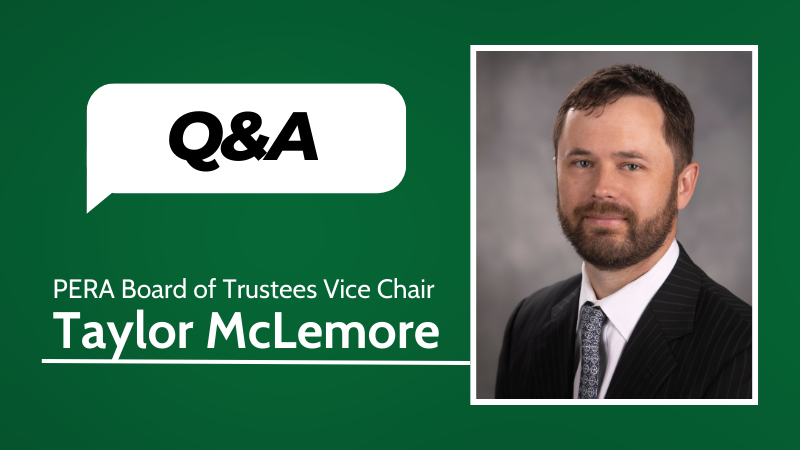Low-cost investing was a popular topic in 2019.
In January, Jack Bogle, legendary investor and founder of The Vanguard Group, died. Bogle was known for giving straightforward, cost-conscious investment advice to the average, everyday investor. His tips were simple: keep investment costs as low as possible, diversify broadly, stay the course.
In October, Charles Schwab Corp. made waves in the investment world when the company announced it would eliminate trading fees for all U.S. stocks and exchange-traded funds (ETFs). Companies including Fidelity, E*Trade, and TD Ameritrade soon followed suit.
More than 90,000 Colorado PERA members have a PERAPlus 401(k) or 457 account. They also have access to low-cost investment choices. In 2019, those costs continued falling.
What you need to know about investing fees
Investing isn’t free. It’s worth understanding the various types of fees you encounter while investing. Over time, small differences can add up. For example, the difference between an annual fee of 0.25 percent and a fee of 0.75 percent can cost a person tens of thousands of dollars over the course of his or her career.
Account fees and minimums
A PERAPlus account costs $1 per month for all members, regardless of account balance. This fee has remained unchanged since PERAPlus launched in 2011. PERAPlus accounts don’t have minimum balance or contribution requirements.
To cover the administration of the investments themselves, PERA funds have an annual administrative fee equal to 0.03 percent of the market value.
Management fees
This is the fee that investment firms charge to manage the assets. Like the administrative fee listed above, this is calculated by multiplying the management fee by the participant’s market value in that fund. For example, a management fee of 1 percent would result in a $10 charge for every $1,000 of market value.
As of November 2019, the total fee (plan administration plus investment management) for PERAPlus funds ranged from 0.08 percent to 0.3 percent. Fee information for each PERAPlus fund can be found here.
PERA has reduced these fees consistently for years. PERAPlus fund fees decreased an average of 68 percent between 2011 and 2018.
Trading costs
This is a transaction fee, usually a flat dollar amount, paid to the brokerage where an investor buys or sells a stock or fund.
PERAPlus investors are free to buy or sell PERA’s 17 funds at any time at no cost. Those who wish to have additional investment options can move funds to a self-directed brokerage account at TD Ameritrade. TD Ameritrade’s fee structure applies.
Front-end and back-end loads
Some mutual funds charge a one-time fee, usually a percentage of the amount invested, whenever an investor buys or sells that fund. This fee is in addition to whatever trading fee the brokerage charges. Front-end loads occur when you buy a fund, back-end loads occur when you sell. None of the PERAPlus funds have loads.
Financial planner fees
This is a fee you pay for someone else to manage your account for you. PERAPlus accountholders have the option to hire an account manager at Voya. The annual fee begins at 0.5 percent of the participant’s account balance. As the account balance gets higher, the percentage goes down.
How PERA cut one fee by more than half
In 2019, four PERAdvantage funds saw additional fee reductions: the Fixed Income Fund, the International Stock Fund, the U.S. Small and Mid Cap Stock Fund, and the SRI Fund.
The U.S. Small and Mid Cap Stock Fund saw the most precipitous drop, with annual fees falling from 0.46 percent to 0.18 percent. This drop came on the heels of a restructure of the fund.
In 2018, PERA initiated a due diligence review of the U.S. Small and Mid Cap Stock Fund. An investment team reviewed elements such as risk, cost, and composition. “We were comfortable with the active risk in the fund, but we thought we could do it at a lower cost,” said Jim Liptak, Director of Equities at PERA.
At that time, the fund contained three underlying funds. Like ingredients in a recipe, each underlying fund contributes something to the overall mix. During the review, staff decided to move from three underlying funds to two. “We knew we wanted to add a small-cap fund we were already managing internally on the [defined benefit] side,” Liptak said. “It demonstrates strong relative performance at a low cost.”
The objective then became identifying a mid-cap fund that would pair effectively with the more growth-oriented small-cap fund. Liptak said the ideal pairing was a value-oriented fund. Growth-oriented equity portfolios focus on companies that are expanding at above-average growth rates. Value-oriented funds focus on companies that are underpriced relative to companies in similar industries.
Because PERA does not currently manage this type of equity fund in-house, the review team looked elsewhere to find the best fit. The team reviewed both passive and active investment options. Dimensional Fund Advisors provided the best solution. “We want the best long-term odds of success at the lowest cost,” Liptak said.
The PERAdvantage U.S. Small and Mid Cap Stock Fund restructure was completed in June 2019. The outlook and risk levels have remained similar, but the cost to PERA members has dropped by nearly 60 percent.
Defined benefitAlso known as a pension, this is a type of pooled retirement plan in which the plan promises to pay a lifetime benefit to the employee at retirement. The plan manages investments on behalf of members, and the retirement benefit is based on factors such as age at retirement, years of employment and salary history.Fixed incomeA type of investment that pays investors a fixed rate of interest over a set period of time. Bonds are a common type of fixed income investment.





Fee reductions are always a good thing! Thank you.
This is valuable information.
How can this be when the stock market is at an all time high?
Hi R.
Just to clarify: This story has nothing to do with the value of PERAPlus funds. Lower fees simply mean investors now pay less to invest.